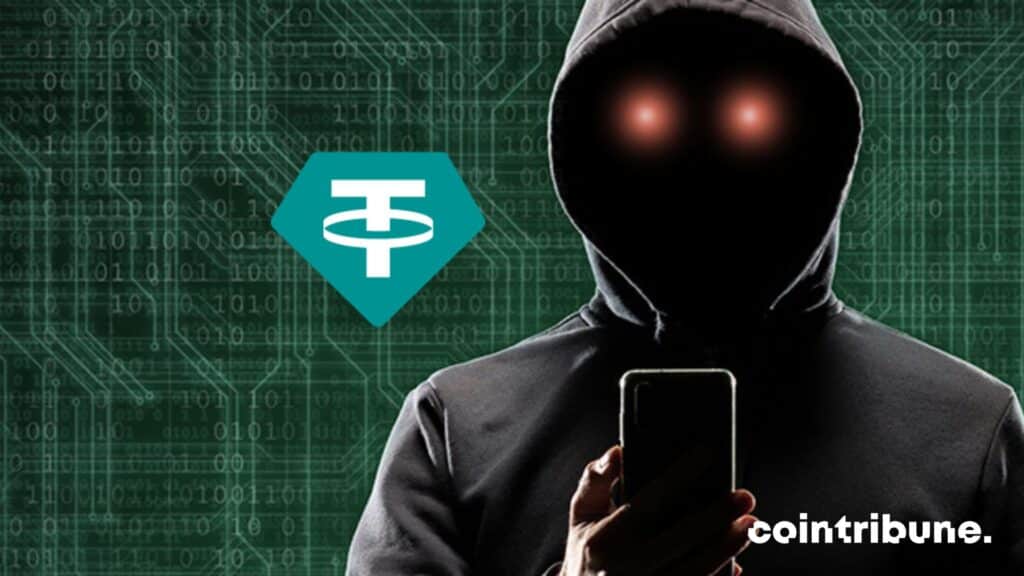USDT is the favored stablecoin of scammers according to the United Nations
According to the UN, USDT allows fraudsters to quickly launder large sums of dirty money. The stablecoin provides them with a discreet and hard-to-trace exit for their illicit gains. An alarming observation that highlights the potential malpractices in crypto.

USDT at the Heart of Major Scams
According to the United Nations report, USDT has become an essential cog for certain criminal networks operating in Southeast Asia. The stablecoin, in particular, enables them to launder profits generated from sophisticated scams such as “pig butchering“.
These scams entail wooing a victim on social media, before extracting large sums of money from them. According to the UN, scammers then frequently use USDT to conceal the fraudulent origin of the stolen funds.
Thanks to the speed of transfers and the difficulty in tracing transactions, the stablecoin offers an ideal way to recycle these illicit profits on a large scale. A concerning statement about the possible deviations from crypto.
An Opaque Operating System
Several characteristics of USDT make it a sought-after tool for criminals in Asia and elsewhere. First of all, it is the world’s largest stablecoin in terms of market cap, boasting high liquidity and widespread adoption.
But above all, its governance is lacking in transparency, according to its critics. Tether, the issuer of USDT, has been involved in several controversies over its reserves and operations.
This opacity benefits criminals who can exchange and transfer large volumes of USDT without leaving a clear track on the public blockchain. This growing problem has been identified by the UN.
A Challenge for Regulators
This situation poses a real challenge for authorities, who struggle to fight this type of transnational cybercrime. Criminal groups take advantage of the decentralized nature of crypto and the difficulty of coordinating responses across jurisdictions.
For the UN, limiting the fraudulent use of USDT will require concerted action, specifically enhancing international judicial cooperation, information exchange, and traceability of suspicious transactions.
However, recent initiatives on cryptocurrency regulation, such as the Digital Assets Act in Europe, are steps in the right direction, provided they are extended beyond regional borders.
The almost institutionalized use of USDT by certain criminal groups in Asia highlights the risks associated with crypto. Behind the promises of innovation, there remain shadows conducive to malpractice. This situation calls for increased mobilization of regulators, both nationally and internationally. Because blockchain technology does not escape the ethical and legal requirements imposed on the financial sector as a whole.
Maximize your Cointribune experience with our "Read to Earn" program! For every article you read, earn points and access exclusive rewards. Sign up now and start earning benefits.
The world is evolving and adaptation is the best weapon to survive in this undulating universe. Originally a crypto community manager, I am interested in anything that is directly or indirectly related to blockchain and its derivatives. To share my experience and promote a field that I am passionate about, nothing is better than writing informative and relaxed articles.
The views, thoughts, and opinions expressed in this article belong solely to the author, and should not be taken as investment advice. Do your own research before taking any investment decisions.